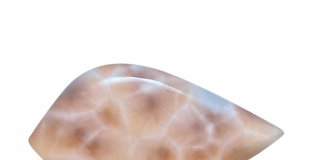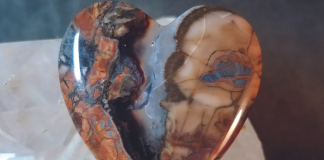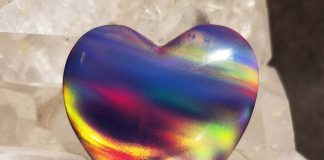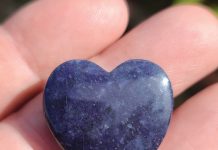Tag: What to Cut
Seraphinite – What to Cut
Seraphinite is a form of clinochlore, a member of the chlorite group. It is only found in the Lake Baikal region of eastern Siberia....
Dumortierite: What to Cut
Dumortierite was originally discovered in the late 1800s by a French mineralogist, who named it after paleontologist, Eugene Dumortier.
Although most people know this material...
Orbicular Bloodstone Jasper
Orbicular bloodstone jasper looks like a cross between fancy jasper and ocean jasper. It is quite appealing with its bright reds, oranges, and greens,...
What to Cut: Fallen Tree Thundereggs
What are fallen tree thundereggs? Somewhere in the mid-1960s in the Ochoco Mountains near Prineville, Oregon, Leonard “Kop” Kopcinski, owner of the Lucky Strike...
Lakota Blue Ice Agate
Lakota Blue Ice Agate is a beautiful chalcedony with blue hues that catches your attention when you see it cut into cabochons. It comes...
What to Cut: Pink Natrolite
Pink natrolite comes from Indonesia, where it’s being mined as seam material. It’s botryoidal on one side, attaching to its basalt host stone, and...
What to Cut: Chrysoprase
Chrysoprase is the outstandingly beautiful apple green stone that really makes heads turn. Chrysoprase is a chalcedony mixed with nickel, which gives it that...
What to Cut: Cold Mountain Thundereggs
Cold Mountain thundereggs come from the Sierra Mountains between the cities of Aguascalientes and Zacatecas, Mexico.
When you hear the word thundereggs, most people quickly...
Mexican Purple Passion Agate
Purple passion agate wide array of colors ranging from soft pink to lavender to deep dark purple and flowering patterns that largely resemble Agua...
What to Cut: Aurora Opal
Aurora Opal is a homogeneously crystalized, synthetic, impregnated opal. Roy Goldberg, at Aurora Opals, describes this material as irregular and fine crystalline, with nondirectional,...




















